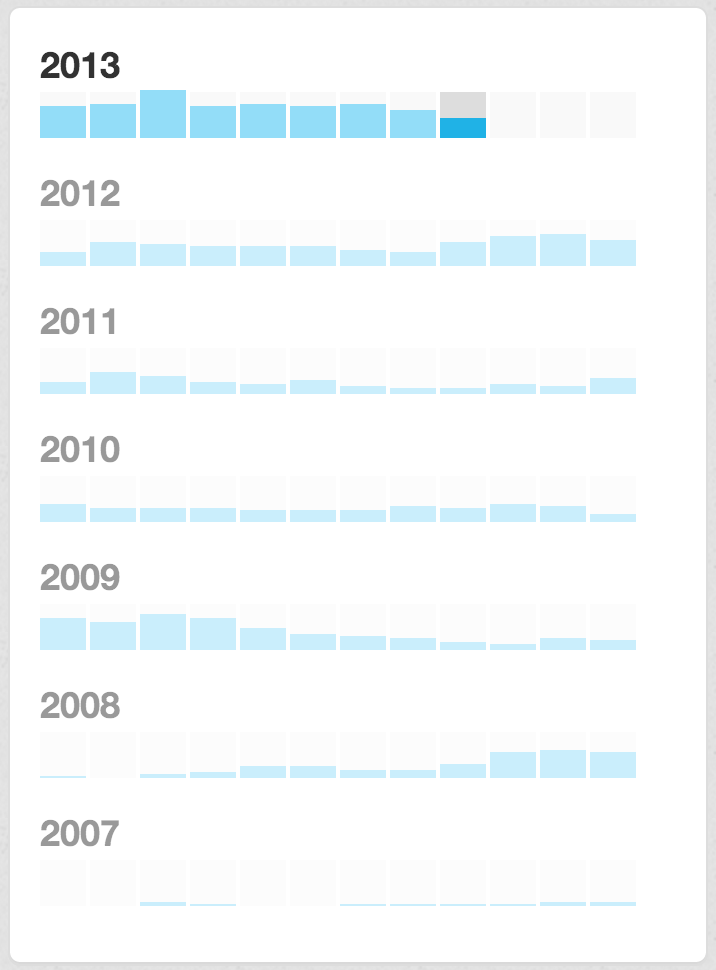 “Digital is bigger than the screen,” says Zach Dunn, who co-founded digital experience company One Mighty Roar with his brother, Sam. [tweetable]We can already see how digital experiences are transcending the screen[/tweetable], from ubiquitous FitBits and Jawbones to emerging Google Glass to Evernote’s move into Moleskine and PostIts. Arduino experiments are everywhere, with Intel today announcing its entry into the maker movement via Galileo. Cisco predicts that by 2020, there will be 9.4 internet-enabled devices per person, and has even launched a connections counter to track the rise of the so-called Internet of Things.
“Digital is bigger than the screen,” says Zach Dunn, who co-founded digital experience company One Mighty Roar with his brother, Sam. [tweetable]We can already see how digital experiences are transcending the screen[/tweetable], from ubiquitous FitBits and Jawbones to emerging Google Glass to Evernote’s move into Moleskine and PostIts. Arduino experiments are everywhere, with Intel today announcing its entry into the maker movement via Galileo. Cisco predicts that by 2020, there will be 9.4 internet-enabled devices per person, and has even launched a connections counter to track the rise of the so-called Internet of Things.
“Internet of Things” is a bit of a misnomer. [tweetable]Ideally as more interactions become internet-enabled, the device as a clunky intermediary will reduce in importance[/tweetable]. Private home automation is an easier first frontier. If a wearable sensor can tell my house I am home, turning on the lights and turning up the heat are straightforward. Companies like Withings have established home markets with a number of smart devices from scales to blood pressure monitors. Users track their own personal health data, and can opt into more public sharing for motivation and support.
In public spaces, internet-enabled interactions raise security and privacy concerns, but provide opportunities as well as solutions to longstanding problems. Three ideas to consider for physical campuses of any kind:
- Immersive experiences: Imagine a person picking up a signifying object (example: a gavel for the law school), and interact with it to summon up an immersive digital experience. Images, video, and sound can create this experience in a setting as dramatic as a whitewashed room (museums, take note) or in a smaller surround-sound booth setting.
- Traffic management: The ability to measure opted-in wearable devices crossing a threshold would improve campus foot traffic management. This could improve wait times at a fitness center or limit time spent in lines at popular food trucks; wearable devices on the alert recipients to could be customized to preference (elliptical, taco truck) in either case.
- Serendipity creation: At a networking event, how do you find the three-five people most interesting for you to meet? There are analog attempts to solve this problem: events like WebInno provide colored nametag stickers if you are hiring or looking for a job. And skilled superconnectors like Peter Boyce (who pointed me to One Mighty Roar) will always be relevant. But what other personal metadata might spark valuable conversations? Imagine an opt-in system where people’s professional and personal interests display above them, and alert others to proximity of those with similar interest. Might it be possible to create or even just enable serendipity?
Much of this is technically possible, if not yet robust. And the structural lag in both social norms and privacy policies remains enormous. While you may not yet feel the need for your own Internet of Conference Tables, consider the opportunities as internet-enabled interactions through devices come to private and public spaces.
Photo credit: mozillaeu


No comments yet.